Sesame oil is a common ingredient in many recipes.
However, not everyone enjoys the taste of sesame oil. Additionally, you may be making a recipe that calls for sesame oil but you don't have any. If that sounds like you, read on to learn more about the best oil and butter based substitutes to this ancient seed oil.
Looking for a homemade sesame oil recipe that can be created using an alternative oil, like peanut or avocado? Skip ahead to the final section, Homemade Sesame Oil Recipe!
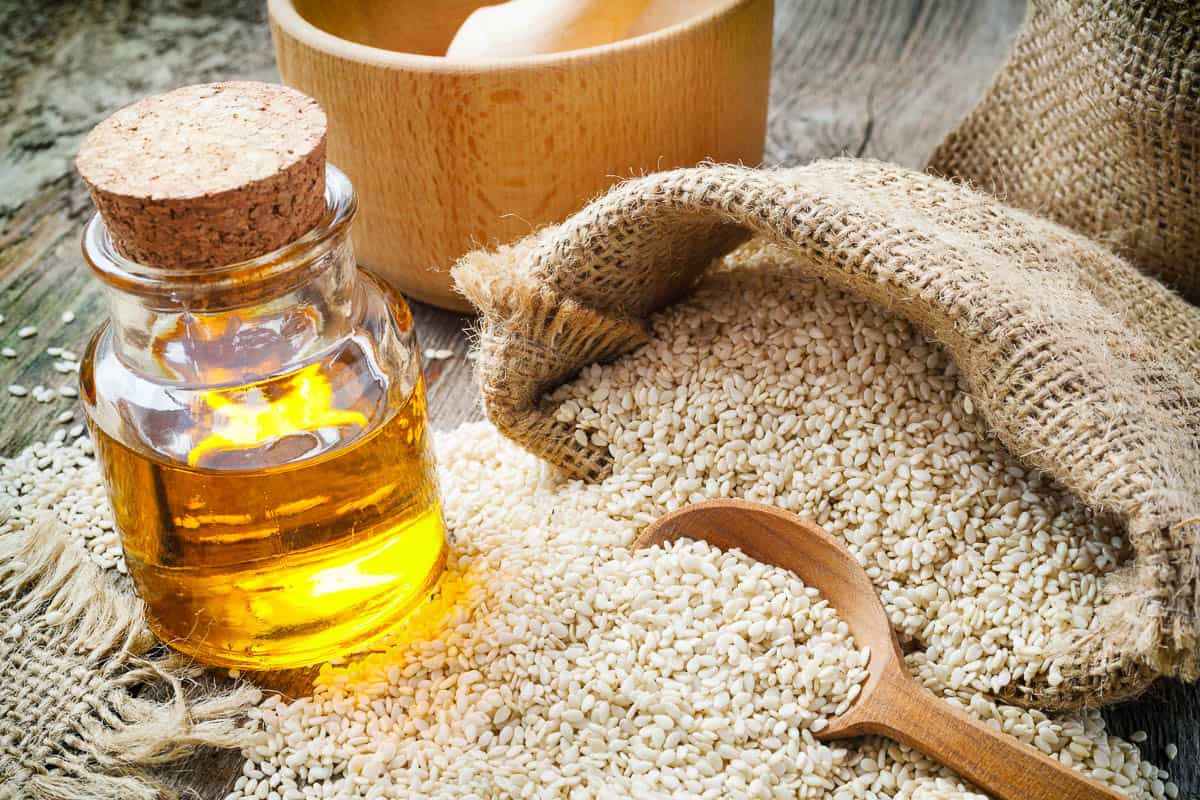
Jump to:
What is Sesame Oil?
Sesame is the oldest oilseed crop known to man, likely because it is extremely resilient. It survives excessive heat and even drought, making it a staple in some of the world’s oldest culinary traditions.
Sesame oil is a popular ingredient in Asian and Middle Eastern cuisine. It is an oil made from sesame seeds.
Recently, sesame oil has become a popular health food for its omega-3 content. This fatty acid plays a significant role in promoting health and longevity. Some studies suggest that diets rich in omega-3 and omega-6 fatty acids, which are both polyunsaturated fats, can lower cholesterol levels, fight chronic inflammation, and reduce the chance of heart attack and stroke.
Cold Pressed vs Toasted Sesame Oil
There are 2 varieties, one being toasted sesame oil and the other cold pressed. Usually, the latter is known simply as sesame oil.
Cold Pressed Sesame Oil
In cold pressed sesame oil, the oil is extracted from raw, pressed sesame seeds. It is lighter in color with a high smoke point making it good for roasting and shallow frying. This has a more neutral flavor.
- Often called Sesame Oil
- Lighter in color
- High smoke point
- Ideal for roasting and frying
Toasted Sesame Oil
In toasted sesame oil the seeds are toasted or roasted before the oil is extracted. It is darker in color with a low smoke point. Because it has already been heated to bring out the nuttiness and rich flavor, heating it again will make it taste burnt with a slightly bitter taste. This should be used more as a finishing oil rather than cooking oil.
- Always called Toasted Sesame Oil
- Darker in color
- Low smoke point– heating may cause burnt/bitter taste
- Ideal for use as a finishing oil/ drizzle– not suitable for roasting and frying
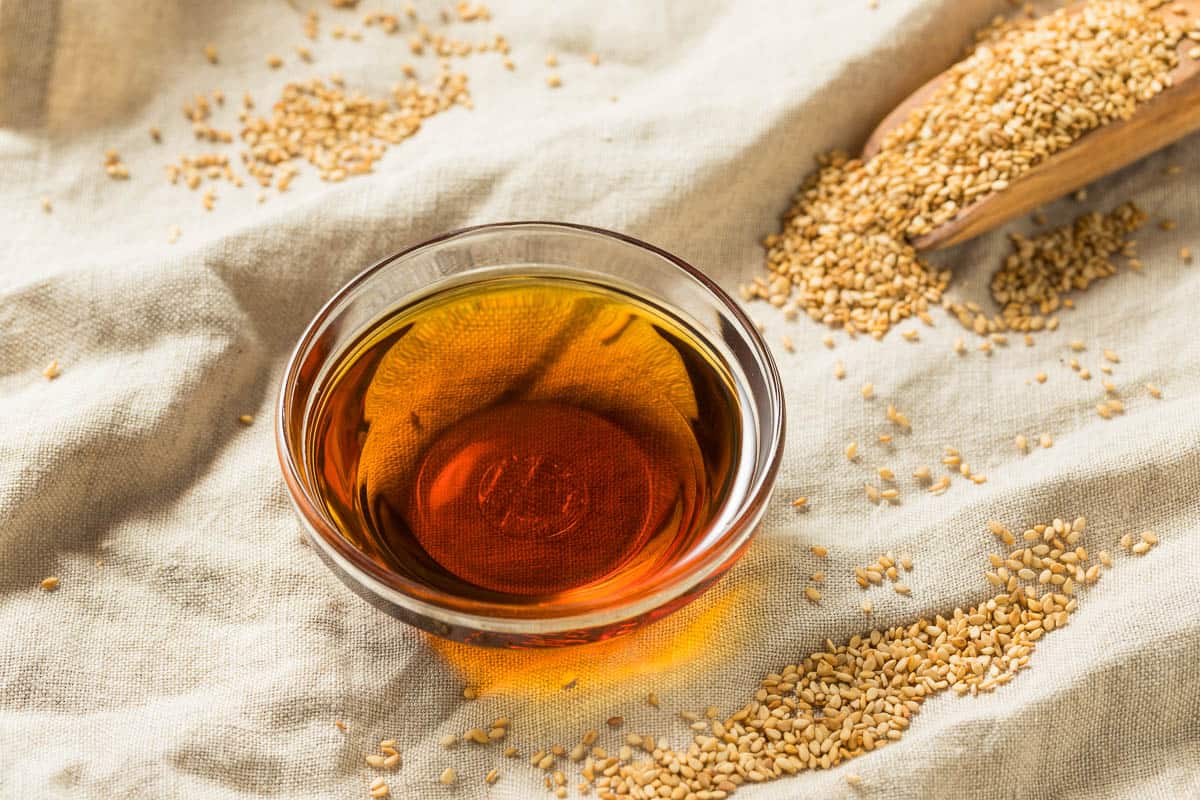
Best Substitutes for Sesame Oil
There are over a dozen good alternatives to sesame oil. Each is listed below. If you would like to make sesame oil from scratch, please skip ahead to the following section, Homemade Sesame Oil Recipe!
Tahini
Tahini is a paste made from sesame seeds, which makes it the best substitute for sesame oil. It has the same nutty flavor, and it is a common alternative to sesame oil used in Middle Eastern cooking.
Because it is a paste, you may need to thin it out by adding water or a neutral flavor cooking oil. This is especially true if your recipe calls for toasted sesame oil to be used as a finishing product. If thinning with an oil, olive and grape seed oil are most common.
- Flavor: Slightly nutty
- Substitution: Use a 1:1 ratio. For example, substitute 1 tablespoon tahini for 1 tablespoon sesame oil.
- Special Notes: The ideal substitute! Especially delicious when used in dressings and sauces. When used as a finishing product, be sure to add a bit of water or oil to thin things out.

Perilla Oil
Perilla oil is made from the perilla plant. Oil is extracted after the seeds from the plant are pressed. With a similar flavor and texture as toasted sesame oil, this option is another great alternative flavor-wise.
However, perilla oil can be difficult to find in ordinary grocery stores. Depending on where you live, you might have to search online or find a local Asian market to buy it. It also contains allergens, which may cause adverse reactions for some.
Should you choose this alternative, it is best to use as a finishing oil or to lightly saute. Cooking with high heat should be avoided as it will make the oil bitter.
- Flavor: Nutty with a hint of licorice
- Substitution: Use a 1:1 ratio. For example, substitute 1 tablespoon perilla oil for 1 tablespoon sesame oil.
- Special Notes: Good in sauces, dips and as a finishing oil. Perilla oil is used in Asian cuisine. Notably, it is a key ingredient in many Korean dishes.
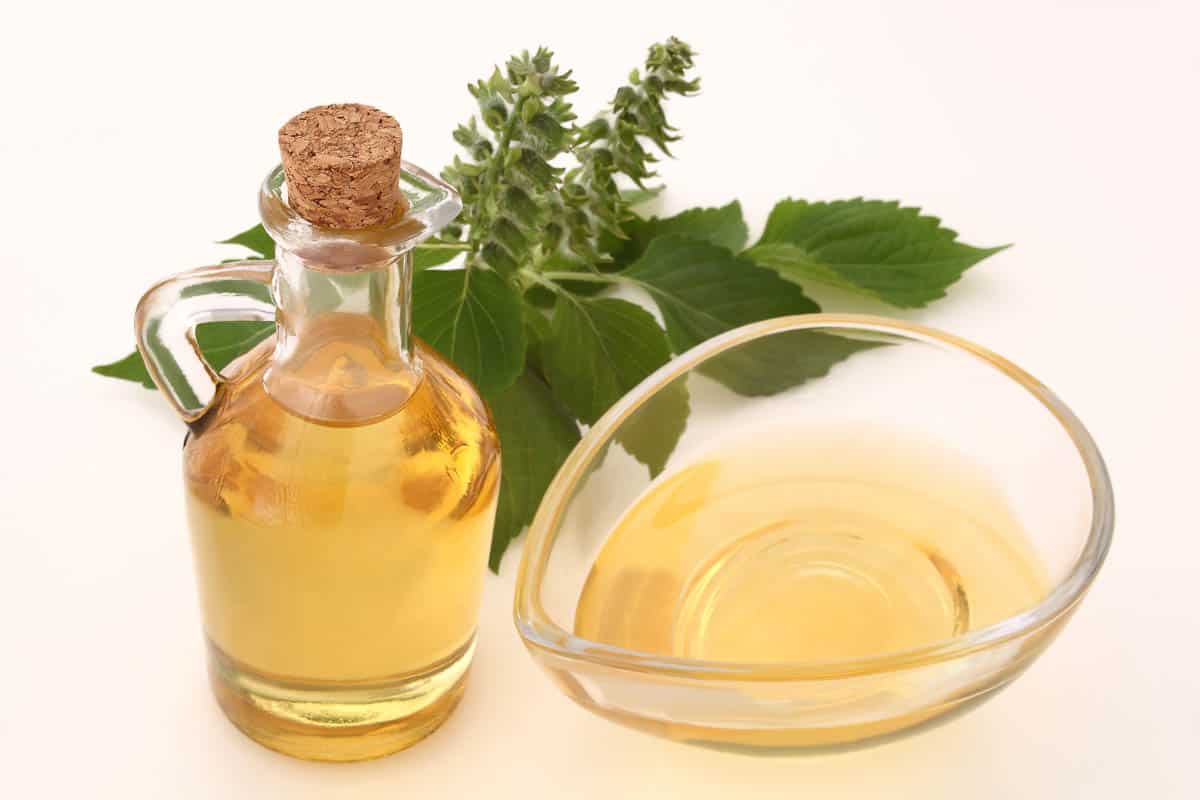
Olive Oil
Olive oil is a simple substitute and best replacement for regular, light sesame oil. It has a neutral flavor, so won’t add a lot of taste. However, extra virgin olive oil should be avoided as it may give your dish a slightly fruity taste.
Olive oil is better for high heat cooking. Commonly, it is used for searing, frying, and also as a base for sauces and dressings.
- Flavor: Neutral
- Substitution: Use a 1:1 ratio. For example, substitute 1 tablespoon olive oil for 1 tablespoon sesame oil.
- Special Notes: Use regular olive oil (not extra virgin). Good for making sauces and dressings, as well as searing and frying at higher heat.
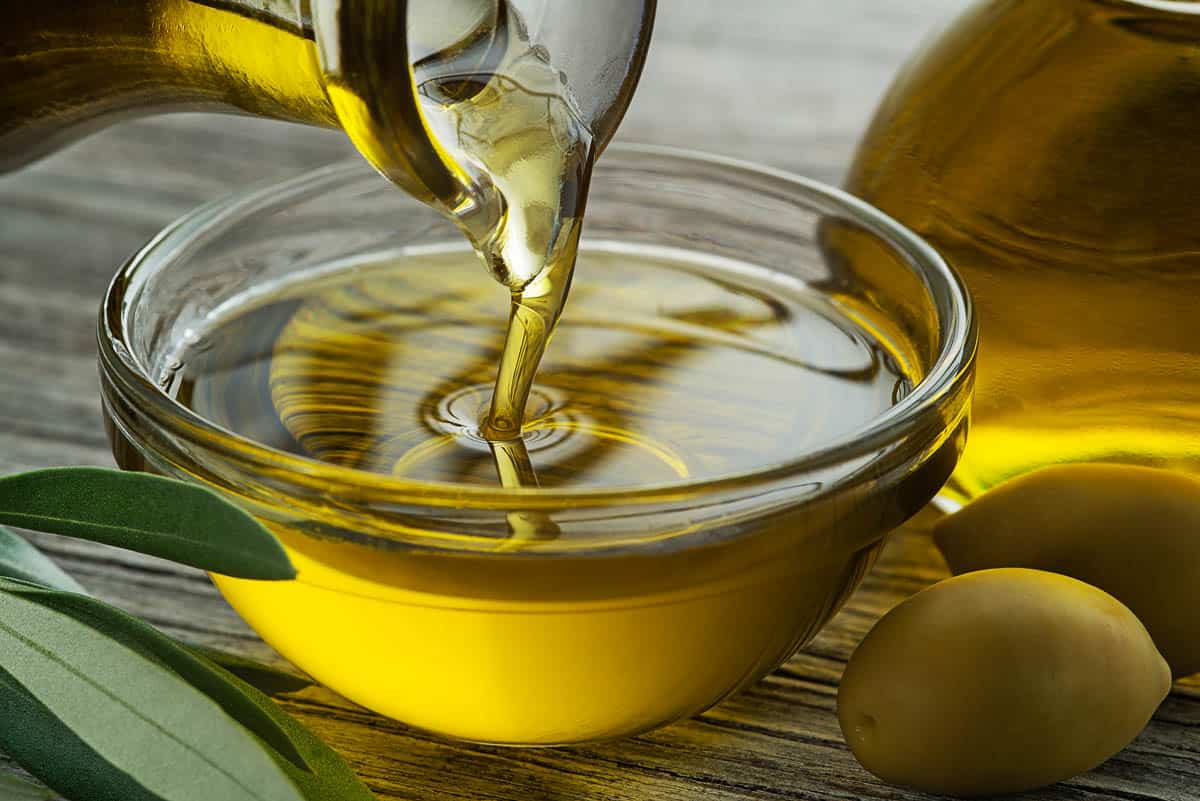
Peanut Oil
Did you know: The peanut is not actually a nut. It is a legume and belongs to the same family as peas and lentils. For culinary and nutritional purposes, however, it is considered a nut.
Peanut oil is a great substitute for at least two reasons. First, it has a similar nutty flavor and aroma compared to sesame oil. Additionally, it has a high smoke point and can be used for roasting and frying.
- Flavor: Light and nutty
- Substitution: Use a 1:1 ratio. For example, substitute 1 tablespoon peanut oil for 1 tablespoon sesame oil.
- Special Notes: Good for roasting and frying. Also works well as an alternative to toasted sesame oil when finishing/glazing.

Walnut Oil
Walnut oil is made from walnuts with a taste of nuttiness, sweetness and richness. Because it has a low smoke point, it should only be used as a finishing oil. Heating walnut oil turns it bitter.
Use walnut oil to make dressings and sauces (uncooked), or drizzle over pasta, vegetables, fish or chicken after it has cooked.
Walnut oil is usually easy to find at grocery stores. It is more expensive than most other oils, but a little bit goes a long way in recipes.
- Flavor: Rich, buttery, with a slightly bitter aftertaste
- Substitution: Use a ¾:1 ratio. For example, substitute ¾ tablespoon walnut oil for 1 tablespoon sesame oil.
- Special Notes: Avoid heating. Best used for uncooked dressings, sauces, and as a drizzle.
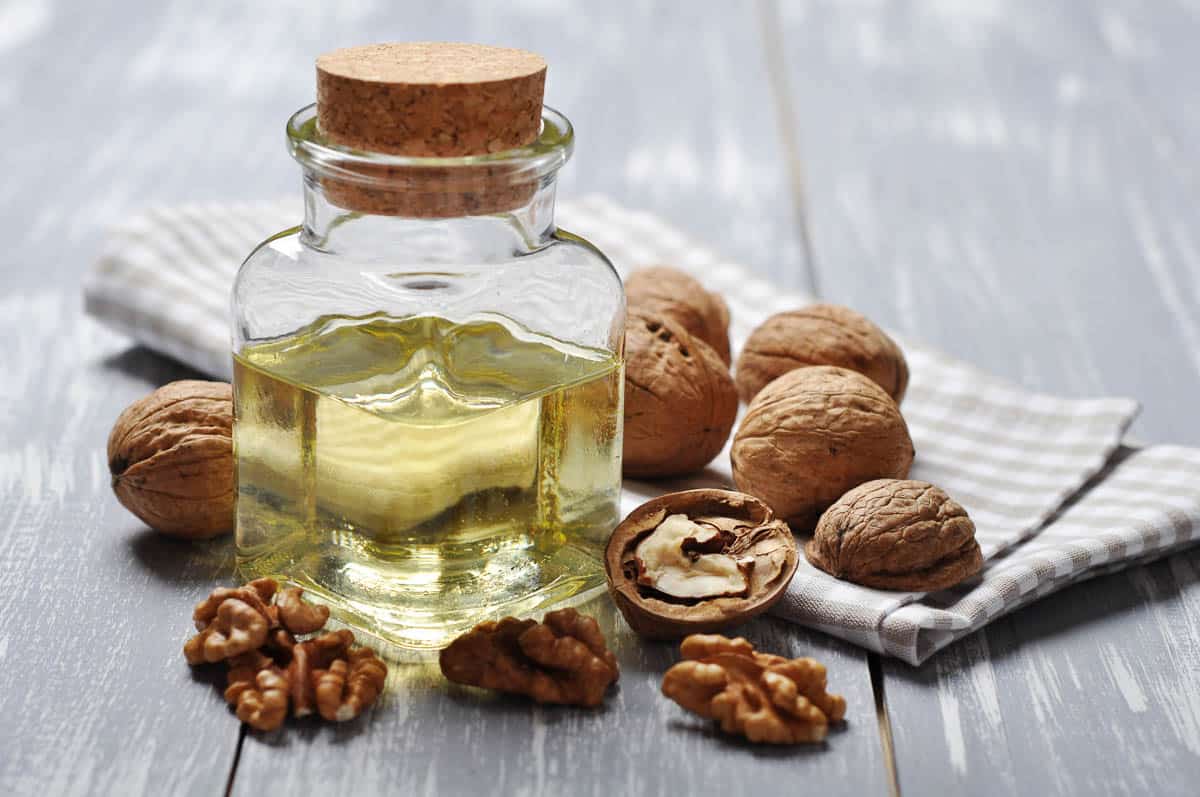
Canola Oil
This type of vegetable oil is made from the seeds of the canola plant (also known as rapeseed, or oilseed rape). It has a neutral flavor and high heat smoke point, which makes it a great sesame oil replacement.
There are two types to look out for: Refined canola oil, and cold pressed. Refined canola oil is the variety described above. It has a high smoke point and can be used for baking and sauteeing, stir fry, roasting and deep frying.
Cold pressed canola oil is not meant to be cooked at high heat, however. It should be used cold and in small amounts, as the flavor is a bit more intense.
- Flavor: Mild and neutral
- Substitution: Use a 1:1 ratio. For example, substitute 1 tablespoon canola oil for 1 tablespoon sesame oil.
- Special Notes: Use refined canola oil for cooking, and cold pressed for uncooked sauces, dressings, and drizzle.
Avocado Oil
If you are looking to add unique texture and richness to your recipe, avocado oil is a good substitution to consider. Avocado has a high smoke point as well, which makes it good for searing, broiling, and stir frying.
In terms of flavor, avocado oil is relatively flavorless. However, it might have a slightly herbal taste when cold. In either case, it does not mimic the flavor of sesame oil much. Instead, it brings its own unique texture to the dish.
- Flavor: Neutral, and slightly herbal when cold
- Substitution: Use a 1:1 ratio. For example, substitute 1 tablespoon avocado oil for 1 tablespoon sesame oil.
- Special Notes: Avocado oil has a high smoke point and is good for frying. However, it has its own unique flavor that does not really mimic sesame oil.
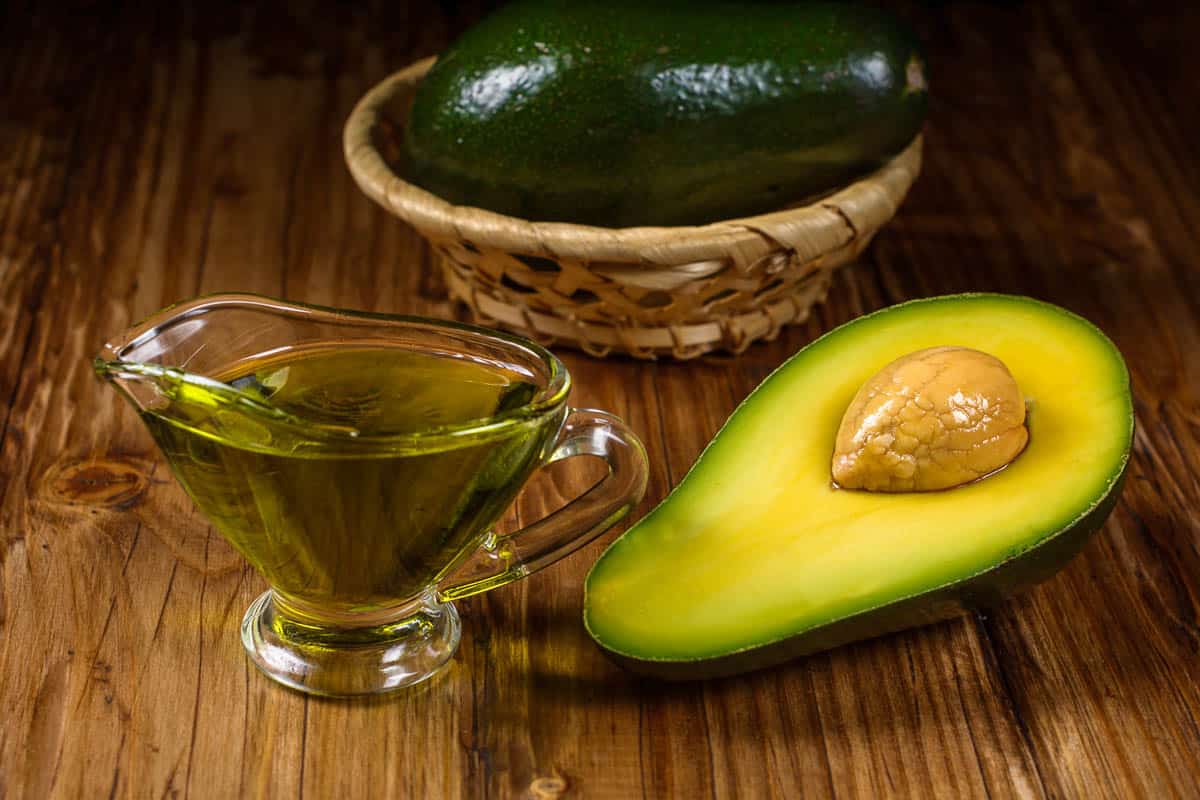
Sunflower Oil
Sunflower oil, as the name implies, is made from sunflower seeds. Two things make this a good alternative to sesame oil.
First, it has a high smoke point. This makes sunflower oil suitable for use in high heat, like when frying, pan searing, or cooking stir fry. Second, it has a relatively neutral flavor. Some might say it’s slightly nutty, but it should not change the taste of your recipe overall.
- Flavor: Neutral, slightly nutty.
- Substitution: Use a 1:1 ratio. For example, substitute 1 tablespoon sunflower oil for 1 tablespoon sesame oil.
- Special Notes: Good for frying, stir frying and pan searing.
Grapeseed Oil
Grapeseed oil is made from grape seeds. Like sunflower oil, it has a more neutral flavor and a high smoke point that makes it good for high heat cooking.
However, this is not a good option if you are looking to have the taste of the oil featured in the dish.
- Flavor: Neutral
- Substitution: Use a 1:1 ratio. For example, substitute 1 tablespoon grapeseed oil for 1 tablespoon sesame oil.
- Special Notes: Good for frying, stir frying and pan searing.

Browned Butter
Butter can add a texture of rich creaminess when added to the end of the cooking process. And by browning the butter beforehand, you can create added sweetness and nuttiness that will provide a delicious alternative to sesame oil.
To brown the butter, simply melt it in a pan over medium-low heat. Be sure to swirl the butter as it melts to avoid letting it burn. Butter can burn quickly, so keep swirling until ready to use.
This substitution is best in recipes that call for the oil to be added toward the end of the recipe. That’s because butter has a low smoke point and can burn easily. For that reason, this is not a good alternative for recipes that involve high heat, like frying.
The exception to this rule: Clarified butter. This kind of butter has the water and milk solids removed. It has a higher smoke point so can be used any time during the cooking process.
- Flavor: Nutty and toasty
- Substitution: Brown first, then use a 1:1 ratio. For example, substitute 1 tablespoon browned butter for 1 tablespoon sesame oil.
- Special Notes: Low smoke point compared to cooking oils (unless using clarified butter). Be sure to add toward the end of the cooking process. Good for stiry fry, sautees, and baking.
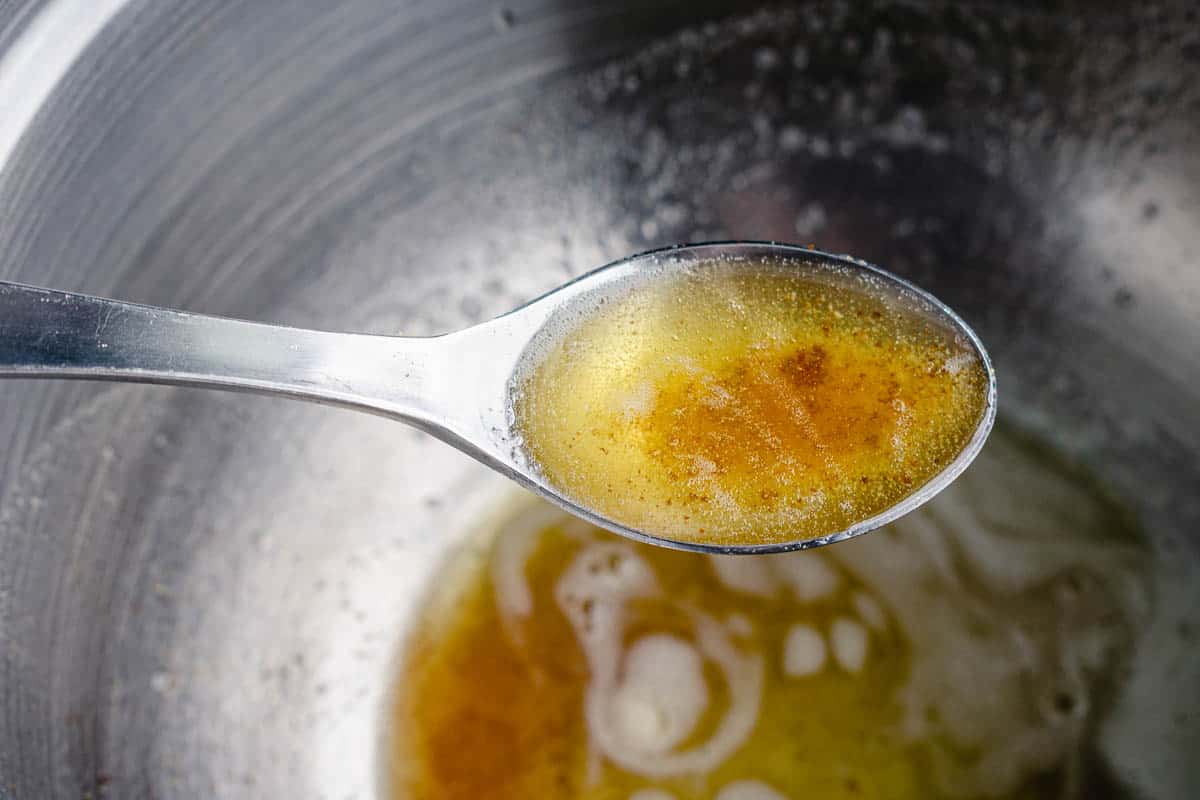
Almond Oil
While not the same as dark sesame oil, the distinct flavor of almond oil makes it a great addition to Asian cooking. Almond oil also has a high smoke point, making it ideal for high heat recipe involving wok frying, sauteing, and stir fry.
Almond oil is a good substitute in low or no heat situations. It is commonly used in sauces, marinades, and dressings as well.
- Flavor: Smooth, butter, with hints of toasted almond
- Substitution: Use a 1:1 ratio. For example, substitute 1 tablespoon almond oil for 1 tablespoon sesame oil.
- Special Notes: High smoke point. Good for frying, sauteeing, stir fry, salad dressings, and sauces.
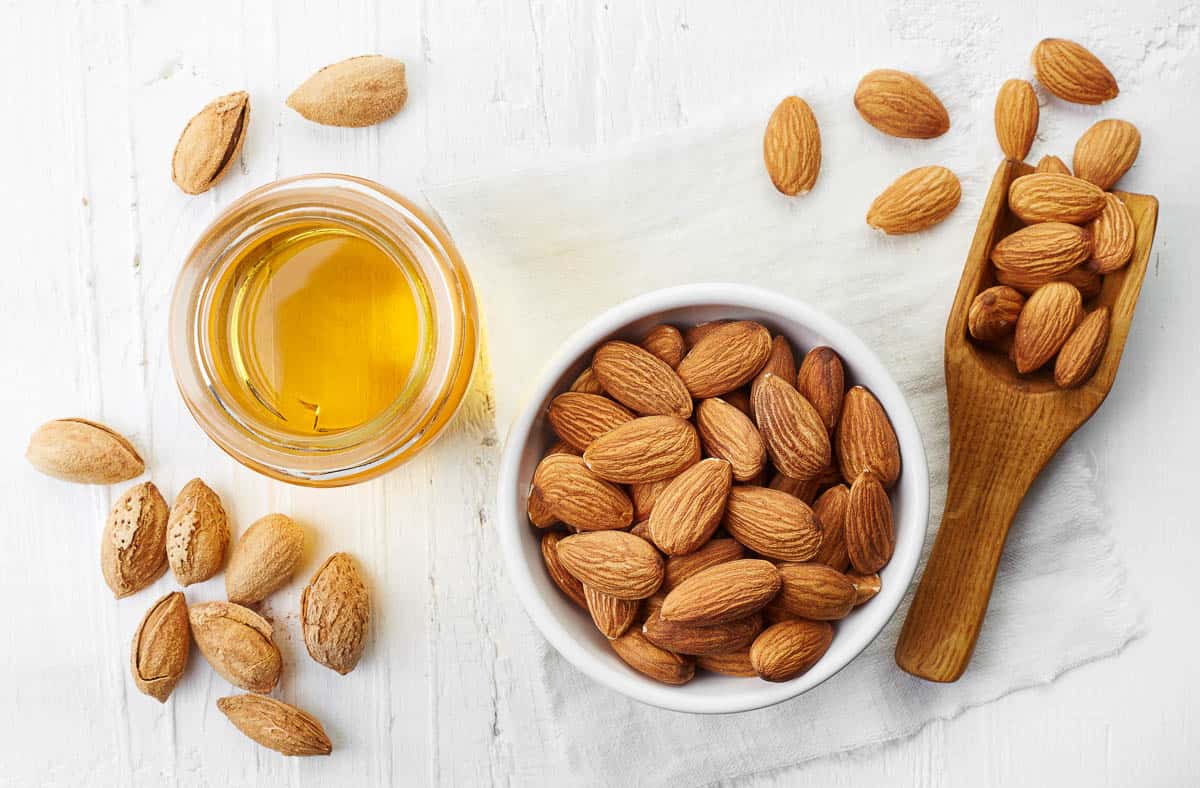
Coconut Oil
The flavor of coconut oil is not the same as sesame oil. Coconut oil imparts a sweeter and creamier taste, whereas sesame oil is more neutral and slightly nutty. This difference will be obvious in whatever you cook.
Refined coconut oil has a higher smoke point than unrefined varieties, so it is better for stir frying and pan frying. Both varieties are good in sauces and Indian curry.
Finally, coconut oil’s flavor profile is generally not a good substitute for toasted sesame oil.
- Flavor: Sweet and creamy.
- Substitution: Use a 1:1 ratio. For example, substitute 1 tablespoon coconut oil for 1 tablespoon sesame oil.
- Special Notes: Good, but expect a uniquely different taste (sweeter and creamier). Not a good substitute for toasted sesame oil, however. If cooking with high heat, use refined coconut oil.
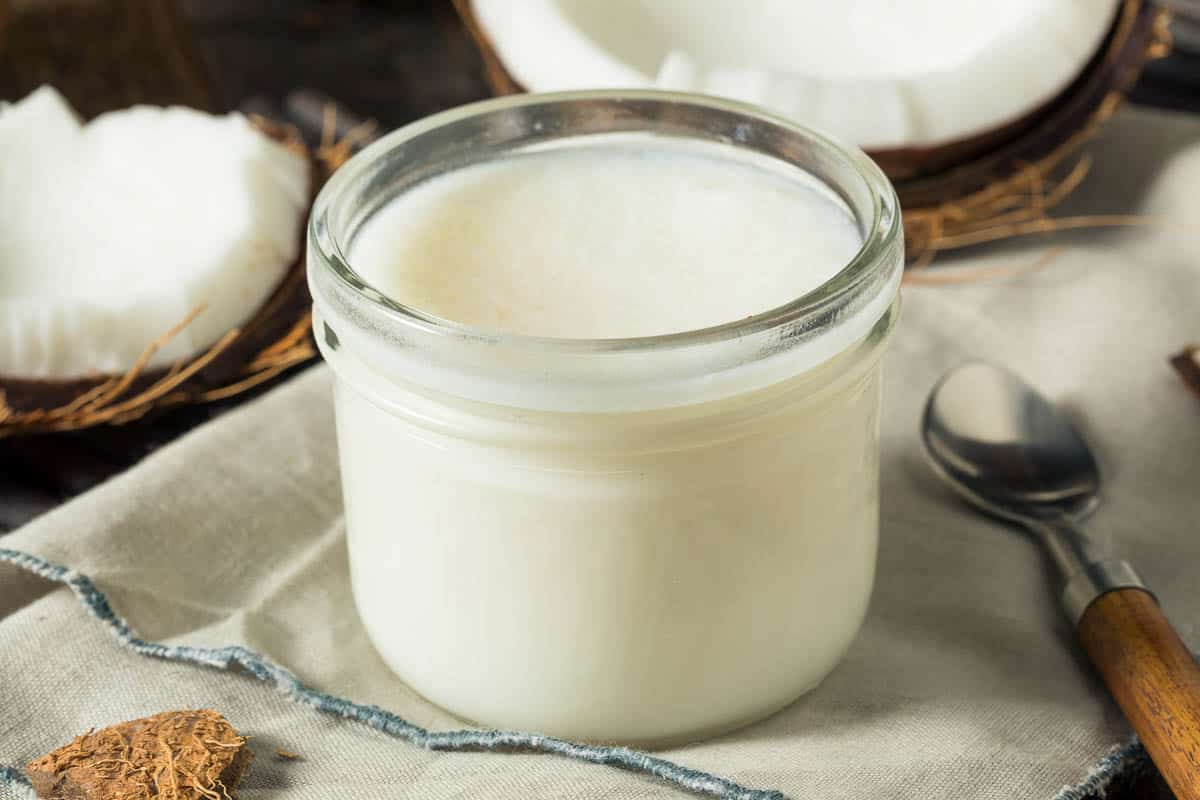
Flaxseed Oil
Flaxseed oil has a similarly nutty flavor as sesame oil. It is high in omega 3 fatty acids, which have many health benefits. Since omega 3 fatty acids are predominantly found in meats, this makes an excellent substitute for vegans who might not otherwise eat enough omega-3s.
Flaxseed oil has a low smoke point, so it is not a good substitute for use in high heat cooking. Instead, it works best cold in salads, dips, uncooked sauces and as a dressing. It can also be drizzled over a hot dish, after it has been removed from heat.
- Flavor: Nutty, somewhat neutral.
- Substitution: Use a 1:1 ratio. For example, substitute 1 tablespoon flaxseed oil for 1 tablespoon sesame oil.
- Special Notes: Low smoke point. Not suitable for high heat cooking. Best used cold in salads, dips, uncooked sauces and as a dressing.

Homemade Sesame Oil Recipe
If you are looking for a substitute because you do not want to buy sesame oil from the store, you might consider making it from scratch. The recipe is simple, easy to prepare, and yields a delicious end result.
Best of all, homemade sesame oil can be customized using any oil you wish. Simply choose an oil from the list above based on your recipe’s flavor profile and heat requirements. Be sure to choose an oil with a high smoke point for anything that is cooked with high heat.
Ingredients
- ¼ cup sesame seeds
- 1 cup neutral oil (may select any labeled ‘neutral’ or ‘nutty’ from the list above)
- Optional: Hand mixer or blender
Directions
- Heat ¼ cup sesame seeds over low heat until light tan
- Add 1 cup of neutral oil and continue cooking over low heat for 2-3 minutes
- If sesame seeds start to burn, remove from heat immediately
- For best results, use a hand blender and mix
- Once mixed, allow to cool for at least 2 hours
- Strain to remove seeds
- Pour into glass jar and refrigerate for up to 2 weeks
Substitution and Special Notes
- Substitution: Use a 1:1 ratio.
- Special Notes: This recipe will take on the smoke point and flavor profile of whichever oil is used. If using in a recipe involving high heat, be sure to select an oil with a high smoke point.
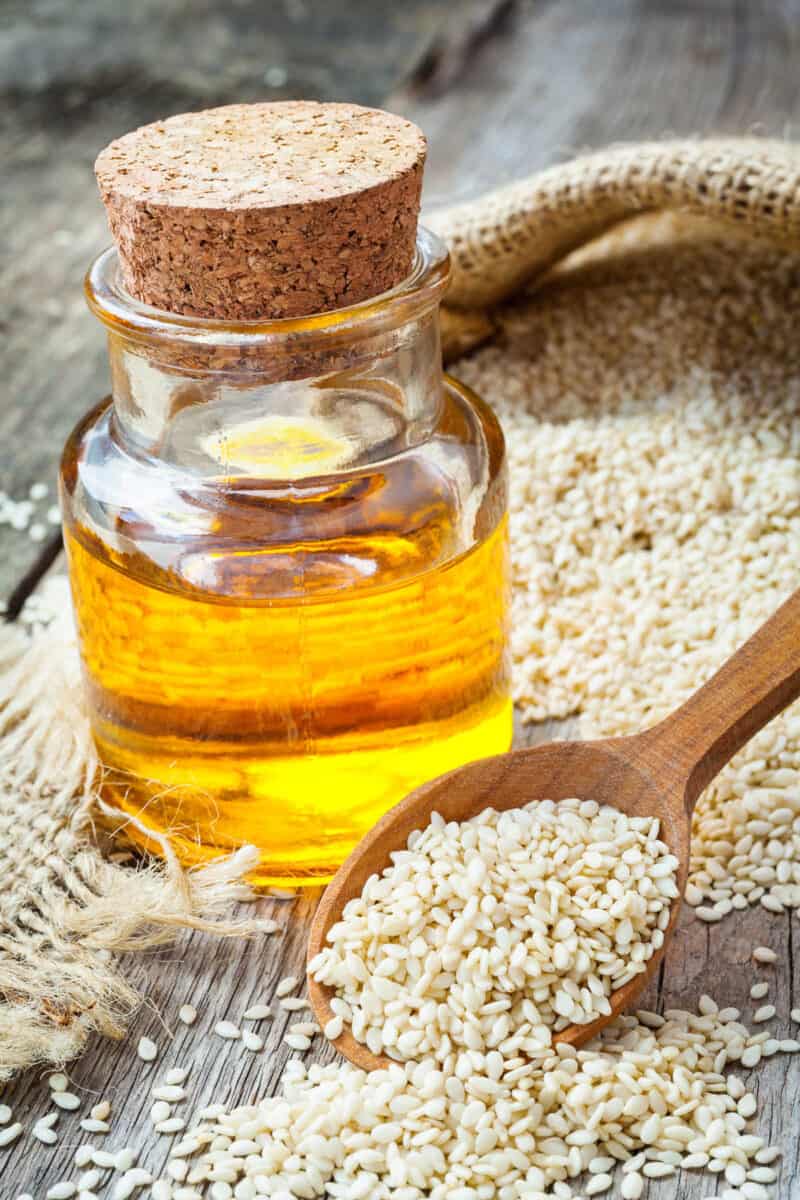
Sesame oil alternatives are delicious and easy to find. When selecting your substitute, be sure to consider how the flavor profile may or may not mix well with the recipe. Finally, always select an oil with an appropriate smoke point. Enjoy!
Do you have any other tried and true substitution recommendations? Please let me know in the comments!


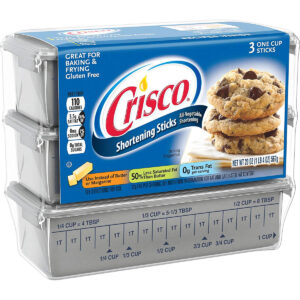

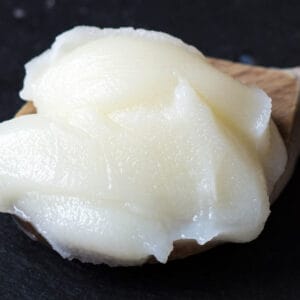

Leave a Reply